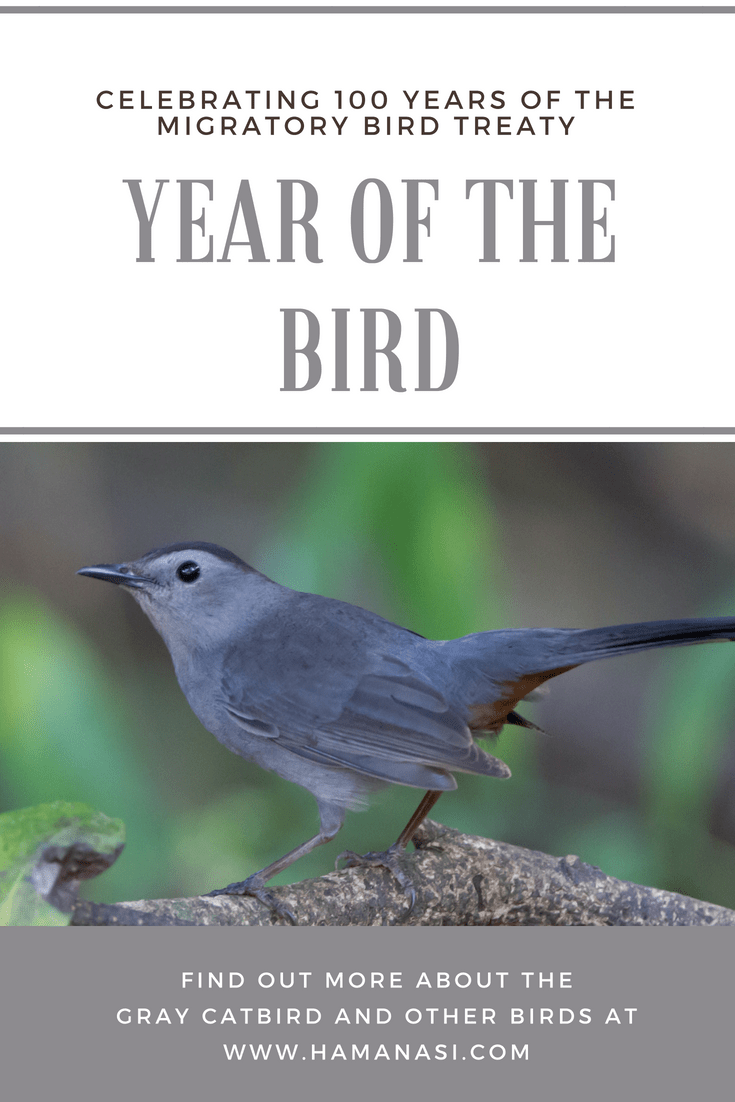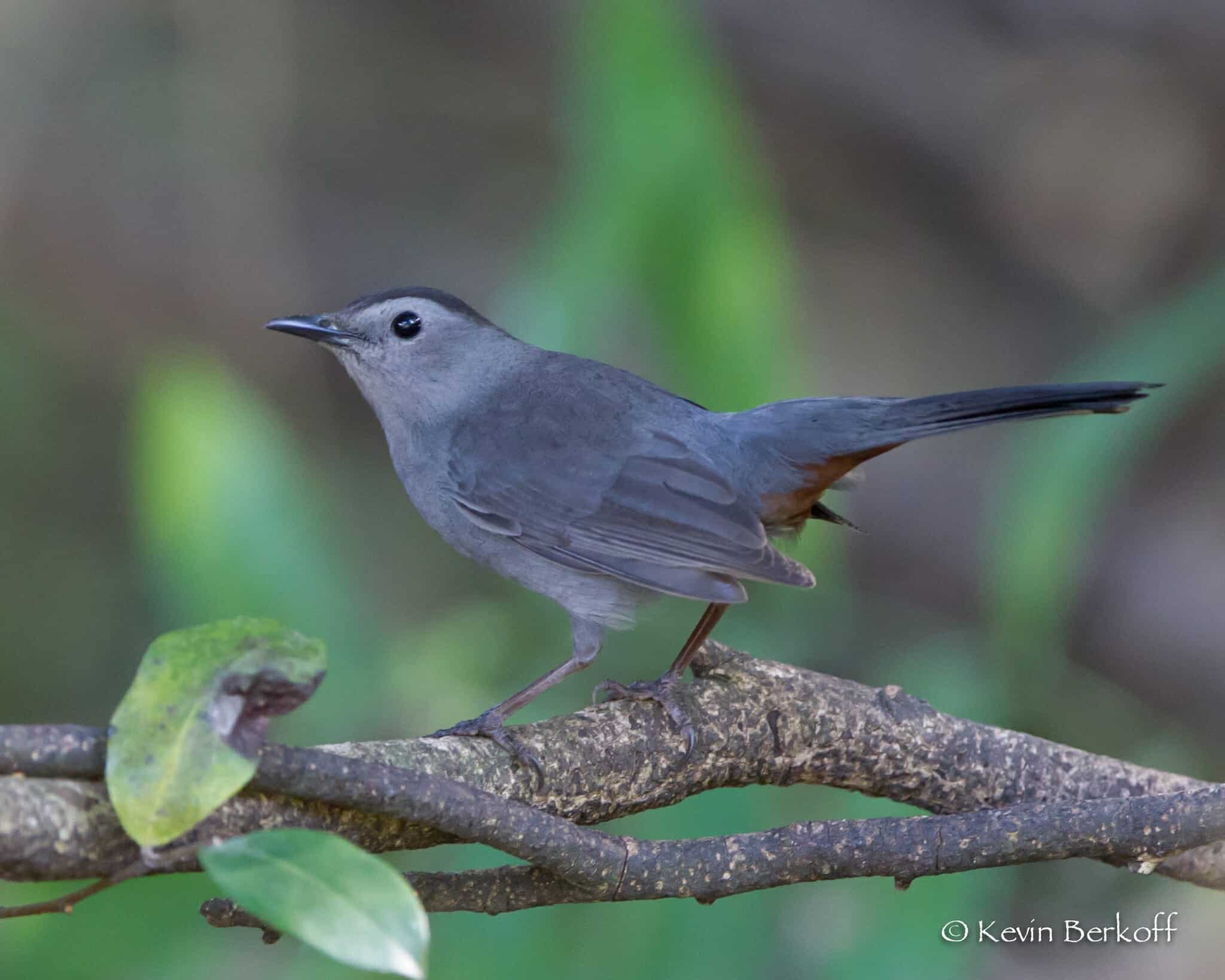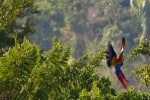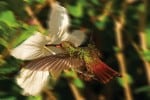Hello!Our bird this month is the Gray Catbird (Dumetella carolinensis), a member of the family of mockingbirds and thrashers. The genus Dumetella is from the Latin term dūmus. It roughly translates to “small thornbush-dweller” or “small bird of the thornbushes”. Carolinensis comes from New Latin for “from the Carolinas”. But don’t let that fool you! This bird is native to most of North America east of the Rocky Mountains and migrates to the southeastern United States, Mexico, the Caribbean and Central America, including Belize. Spring migration ranges from March to May, and in the fall ranges from late August to November.
2018 is the Year of the Bird!
Why is that? Not because of the Chinese calendar – they’re on the Year of the Dog, but there’s room for more than one animal this year. 2018 marks the centennial of the Migratory Bird Treaty Act, perhaps the most powerful and important legislation ever passed to protect birds. To celebrate the landmark treaty, Hamanasi is joining National Geographic, Audubon, BirdLife International and the Cornell Lab of Ornithology on a “Year of the Bird” Campaign. Nature lovers around the world are invited to commit to protecting birds today and for the next hundred years.
At Hamanasi, we love birds and have pledged to protect them. There are over 500+ species of birds in Belize, some of them migratory. Every month in 2018 Hamanasi will bring you a post introducing you to one of the many migratory birds you can find in Belize. We’d love to feature your work in next month’s post! We invite you to take pictures of these birds and forward them to us whether taken here in Belize or where you live – they are migratory, after all! If you post on social media, use the hashtag #BirdYourWorld
Meet the birds we’ve covered previously:
- January: The Roseate Spoonbill
- February: The Scarlet Macaw
- March: The Hooded Warbler
- April: The Tricolored Heron
- May: The Black-necked Stilt
- June: The Snowy Egret

We asked Hamanasi Inland Guide, Ems Sho to give us some insight on the Gray Catbird.
Don’t Judge Me by My Looks!
Audubon calls the Gray Catbird, “rather plain, but with lots of personality,” and, indeed, that is true! The bird is medium sized, gray all over with a darker cap. Its undertail is a cinnamon color. The adults often perch with their tails down which give them a hunched look. We’ll get to his behavior later!
Gimme Shelter
The preferred habitat for Gray Catbirds is dense, thorny vegetation. They love scrublands, woodland edges, abandoned orchards and overgrown farmland. They avoid dense, unbroken woodlands and coniferous forests. Since humans are often quite good at disturbing land, dense shrubs, vine tangles and thickets are rather common.
Bugs and Berries
Gray Catbirds mainly forage on the ground in leaf litter using their bills to move leaves and twigs. About 50% of their diet is fruit and berries – the other 50% insects; mealworms, earthworms, beetles, spider, grasshoppers, moths, ants, etc.. In summer, gray catbirds will eat mostly ants, beetles, grasshoppers, caterpillars, and moths. Fortunately for catbirds, in Belize we have lots of fruit and bugs!
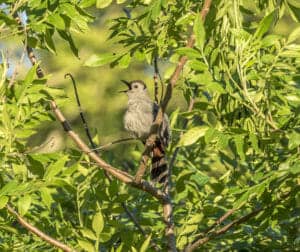 They Really Don’t Sound Like a “Cat”!
They Really Don’t Sound Like a “Cat”!
This species is named for its raspy mew-like call, but it doesn’t sound like too many cats we know! Males will sing any time of day a series of random long, halting short notes combined to make a song, which may last up to 10 minutes! Sounds may include squeaks, gurgles, whistles, whines and nasal tones. Like many members of the Mimidae, such as mockingbirds, they also mimic the songs of other birds, as well as those of tree frogs. Male Gray Catbirds use loud songs to proclaim territory and a softer version when near the nest or when a bird intrudes on his territory. Females usually don’t sing, but may sing the quiet song back to the male.
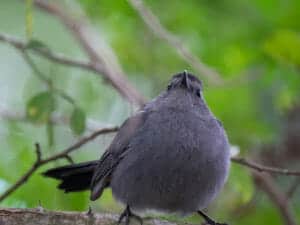
Don’t Mess with Me!
Although usually shy, Gray Catbirds are not afraid of predators and react to them aggressively by fluffing up their breasts and rump feathers, spread their tails, and open their bills toward the sky while making their namesake mew sounds. They are also known to attack and peck predators that come too near their nests. Sometimes these innocent looking birds destroy eggs and nestlings of woodland species like sparrows. Yikes!
Courtship – Let Me Show You My Moves
When it is time to court, the males put on quite a show. Male catbirds sing constantly morning and evening, and even at night. Courtship may involve a male chasing a female, swaggering and bowing with wings drooped and tail raised. The male may face away from female to flaunt his patch of chestnut under tail. No mooning, thank you!
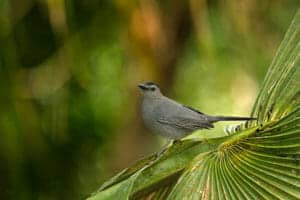
Nesting Habits
Catbirds usually build nests hidden at the center of dense shrubs, small trees, or in briar tangles. Nests are usually about 3-10 feet off the ground, but may be on the ground or as high as 60 feet. Females are the great architects here. Over 5-6 days, females construct the nests, but the males sometimes help supply materials. The open cup result is bulky comprised of twigs, straw, bark and/or mud and sometimes pieces of trash with a woven inner lining of grass, hair, pine needles or small roots. Finished nests are about 5.5 inches across and 2 inches deep.
No Squatters!
Clutch sizes are 1-6 eggs, with 2-3 broods. Eggs are a beautiful turquoise green, sometimes with small red spots. Should a Brown-headed Cowbird lay eggs in a catbird nest, the cowbird eggs are usually punctured and ejected by the adult catbirds. After an incubation period of 12-15 days, hatchlings are partially covered with dark brown or gray down. Both parents take turns feeding the young birds.
Curious Fact
The oldest known Gray Catbird was at least 17 years, 11 months old when it was recaptured and rereleased during banding operations in New Jersey in 2001. It had been banded in Maryland in 1984.
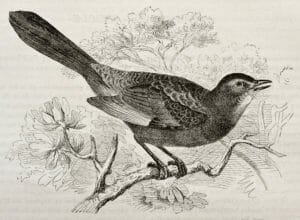
We’re Doing Great!
The conservation status of Gray Catbirds is of low concern. However, there is some worry that clearing along coasts of wintering grounds will impact the future of this bird.
Backyard Tips
To attract Gray Catbirds, plant shrubs in areas of your yard near young deciduous trees. Catbirds also love fruit, so you can entice them with plantings of native fruit-bearing trees and shrubs such as dogwood, winterberry, and serviceberry in the north. In Belize, cocoplum, nance and blackberry trees are popular. Fortunately, we have many of these at Hamanasi!
Header image by Hamanasi guest Kevin Berkoff.
